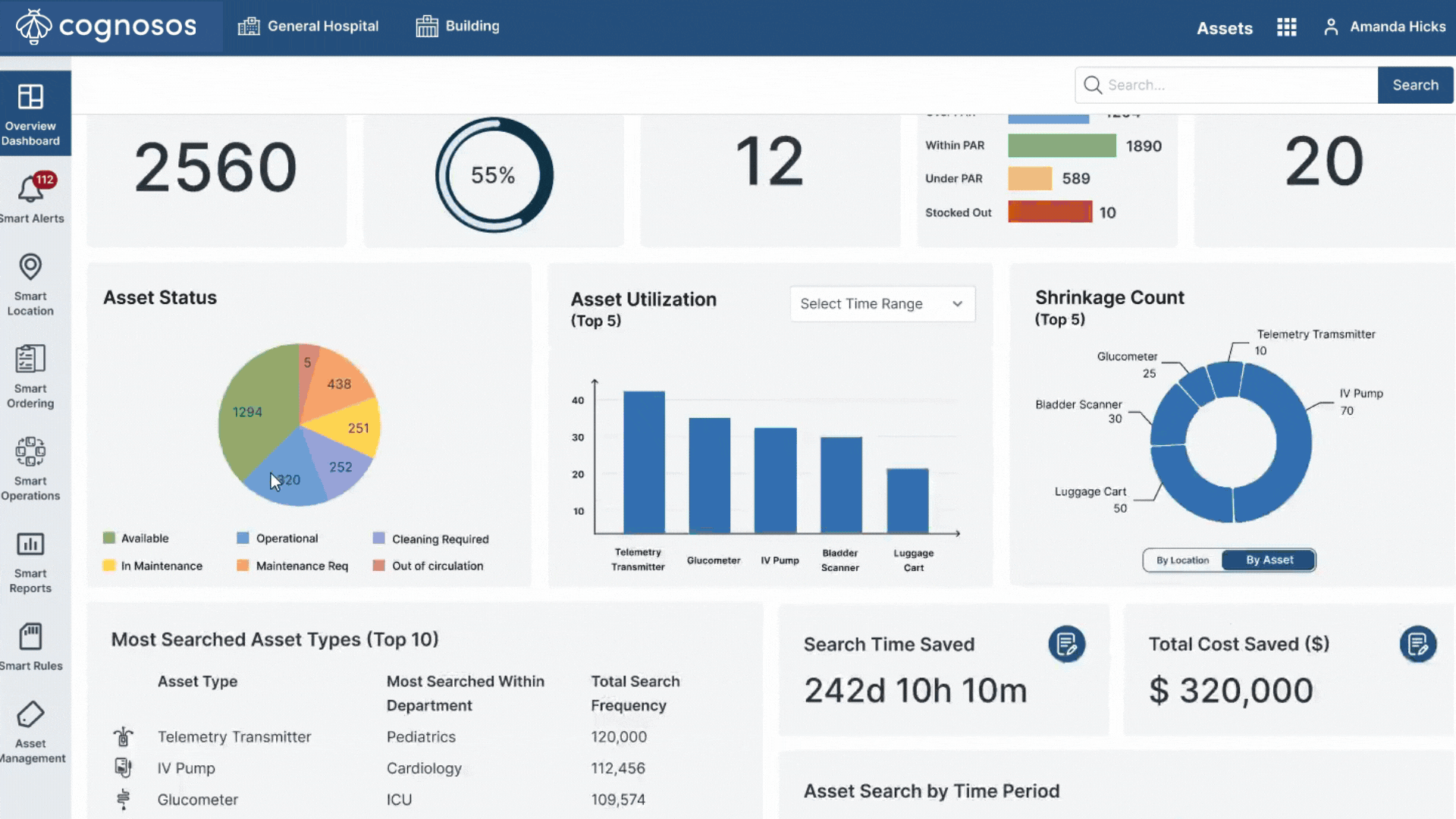Using Hospital RTLS To Relieve Key Pain Points
Hospitals have emerged from the turbulence of the COVID-19 pandemic only to confront a new set of emerging challenges. Staff shortages, payer-provider disputes, a changing technology landscape, financial strain, and more have coalesced into an intimidating mess of challenges for healthcare providers to sort through. Hospital RTLS (Real-Time Location Systems) is a modern technology advancement that employs Bluetooth technology for real-time tracking of healthcare operations. While RTLS isn’t a miracle cure for all the industry’s pain points, these solutions can deliver some immediate relief when addressing challenges at the point of care. This system of tags, gateways, and software provides real-time data capture and tracking of patients, staff, inventory, workflows, and more. In turn, this data can be leveraged to lower operating costs, improve utilization of resources, and deliver more effective care.

1. Strengthening Clinical Staff Amidst Shortages
There has been a growing imbalance in the number of healthcare professionals joining the workforce each year and the number exiting the field due to burnout, stress, retirement, and other factors. In fact, there is a projected shortage of around 40,000-105,000 physicians by 2030. Nursing faces a similar shortage, with a projected 193,100 annual job openings through 2032, and only 177,400 new entrants expected.
Technology alone won’t fill labor gaps but it can help attract and retain a coveted young workforce. Additionally, RTLS has been shown to optimize labor allocation in healthcare. Specifically, RTLS platforms have sped up the patient turnover process, giving time and bandwidth back to caregivers. One community hospital in Texas saved 2,339 hours annually by reducing bed vacancy time after patient discharge, increasing their capacity. By investing in modern technology systems, hospitals can optimize their labor and show initiative in creating a better work environment.
2. Alleviating Financial Pressures
While compassionate, quality patient care is always the primary objective, hospitals still manage costs and revenue as all businesses do. Unfortunately, many hospitals are on the wrong side of the margins due to rising supply costs and lower patient volumes.
With over $140 billion spent on medical supplies in 2023, hospitals can quickly build an ROI by optimizing asset utilization, reducing shrinking, and improving labor productivity. In fact, an estimated $4,000-$5,000 is lost annually in missing equipment for every hospital bed in a facility. For a 400-bed hospital, that equates to a potential $1.6 million in cost savings. By controlling unnecessary costs, RTLS can help hospitals navigate their balance sheets out of the red.
3. Diagnosing Opportunities to Improve Care
A positive patient experience is key to effective care, patient retention, and profitability for healthcare organizations. However many of healthcare’s top revenue-generating services like oncology, diagnostics, and orthopedics have shifted from the hospital to outpatient settings. A large driver for this shift is changes in patient preference as outpatient procedures can be more flexible and personalized.
In addition to monitoring healthcare operations, RTLS can also empower patients with access to tools to manage their care—from scheduling appointments, navigating facilities, and digitally accessing medical records and treatment plans. By implementing a seamless digital experience, health systems can match the personalized and flexible care found in outpatient settings, as well as eliminate the logistical headaches associated with traditional hospital care.
4. Transplanting Modern IT Investments
There is an excess of $444 billion spent annually across healthcare administration, poor care coordination, and overspending on supplies alone. Prudent IT investments like an RTLS can optimize care and reduce waste at every level. Healthcare RTLS optimizes operations across the hospital campus with efficient asset management, streamlining clinician workload, enforcing compliance requirements, and monitoring staff and patient safety.
One way that modern IT like RTLS reduces waste is by actually managing healthcare technology investments. With an influx of healthcare mobile computers and clinician iPhones, mobile device usage has exploded throughout the healthcare industry. In turn, many mobile devices end up missing or go unused due to this massive influx. In one analysis, a 200-bed hospital could slash its mobile fleet by 25%, cutting out 1.3 million in capital expenditures and an additional $160,000 in IT service costs. RTLS is the next evolution in advancing technology at the point of care. By replacing antiquated methods with data-driven systems, hospitals can easily lower costs and optimize resource utilization.
Get a Cognosos Hospital RTLS Demo
Real-Time Visibility Across The Hospital with Bluetooth (BLE)
Cognosos is an IoT-enabled solution designed to help hospitals improve operational efficiency, staff safety, clinical workflows, and patient engagement. The Cognosos platform is a full-stack technology solution that uses Bluetooth (BLE) technology to track assets, personnel, and processes throughout the hospital with room-level accuracy and real-time data capture. Learn more about Cognosos hospital RTLS and how it can be seamlessly deployed to provide secure, private monitoring of assets, staff safety, patient experience, environmental compliance, and more!

